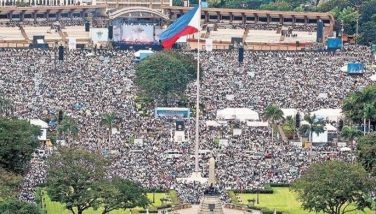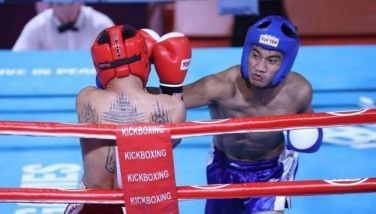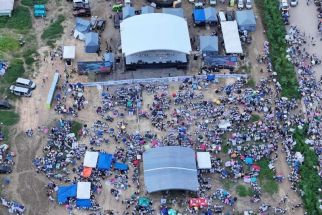Our September fiesta
Recently, we read that there has been some debate over the upcoming celebration of the Nuestra Senora de Penafrancia (Our Lady of Penafrancia) fiesta in Naga. Essentially, it was a discussion between the Naga City Government and the Catholic Church (Archdiocese of Caceres) over the additions of certain types of celebrations during the fiesta; which Archbishop Leonardo Legaspi said had diminished the solemnity and religiousness of the celebration. In the end, the City and Church agreed to setup a pilgrimage zone, within which the religious activities would occur. This “triangle” connects from the Naga Basilica to the Naga Metropolitan Cathedral and the Penafrancia Church. The City also promised to limit extra-curricular activities, including beauty pageants within the nine-day celebration. With over one million pilgrims expected to attend the fiesta, we applaud the ability of the Naga City government and the Archdiocese of Caceres at reaching an amicable compromise.
The cult of Penafrancia began in 1424 — more than 50 years before Columbus discovered America. The story goes that Simon Vela, a wealthy Parisian who gave his inheritance away to the poor, discovered the hidden image of the Virgin Mary after she visited him in a dream. Vela’s discovery of the image in Pena de Francia (Penafrancia) was supposedly prophesied by a saintly young girl in the town of Sequeros, Sierra de Francia of the province of Salamanca in Spain. She died and then resurrected long enough to say that a pious man would find a hidden image of the Virgin Mary — this man would eventually prove to be Simon Vela.
The cult reached the Philippines when a philosophy student at the University of Sto. Tomas, suffering from ill health, read a booklet on the miracles of the Penafrancia Virgin and became her devotee. He attributed his improved health to her intercession and in thanksgiving, worked to construct two Penafrancia churches. One was in San Fernando de Dilao, Manila in 1712. The location was chosen because legend was that an old woman found a portrait of the Penafrancia during a typhoon. She spied it floating on the flowing water, but when she picked it up it was perfectly dry! Unfortunately, the cult did not prosper and all that remains are the painting, the church at 1343 Gomez and a street named after the Virgin. The other church was constructed in 1710 at Nueva Caceres, Camarines Sur. The cult then proliferated throughout the Bicol region.
An image is a concept made visible. The Bicol cult centers around a crude image of the Virgin and Child apparently and allegedly patterned after the Pena de Francia image. Interestingly, the Bicolanos never made representations of the Gugurung and other lesser deities in their pre-Hispanic pantheon; the lagdongs were clumsy depictions of the spirits of their ancestors. The Penafrancia Virgin may very well be the first major iconographic attempt in Bicolandia. The original image in Salamanca is black. The Bicol carver could very well have used kamagong in crafting his version of the Penafrancia, instead he used a light-colored wood and stained it with dog’s blood. Igorots and Bagobos offer sacrifices to their idols by suffusing them with animal blood. One of the first legends of the Penafrancia Virgin in Bicol is resurrecting the dog that gave its life to tint her image.
The Penafrancia festivity is preceded by a novena, a daily nine-day prayer of devotion. The novena traditionally begins with the transfer of the image from her shrine in Penafrancia Church to the Metropolitan Cathedral. The transfer is always timed so that the ninth day will fall on the third Saturday of September. The celebration then culminates with a fluvial procession.
A good question is: Why a fluvial procession? There are several possible explanations. First, it is claimed that the river is where the Virgin resurrected the dog. Second, holding a procession in the Bikol River is what symbolically makes the celebration a regional rather than just a Naga affair. Third, is the part the rivers played in the lives of our ancestors. The ancient Filipinos were animists and endowed the rivers, mountains and tress with souls. Diego de Artieda wrote in 1753: “They have a god of the sea and a god of the rivers.” Our pre-Hispanic roots and history can still be found today.
- Latest
- Trending





























